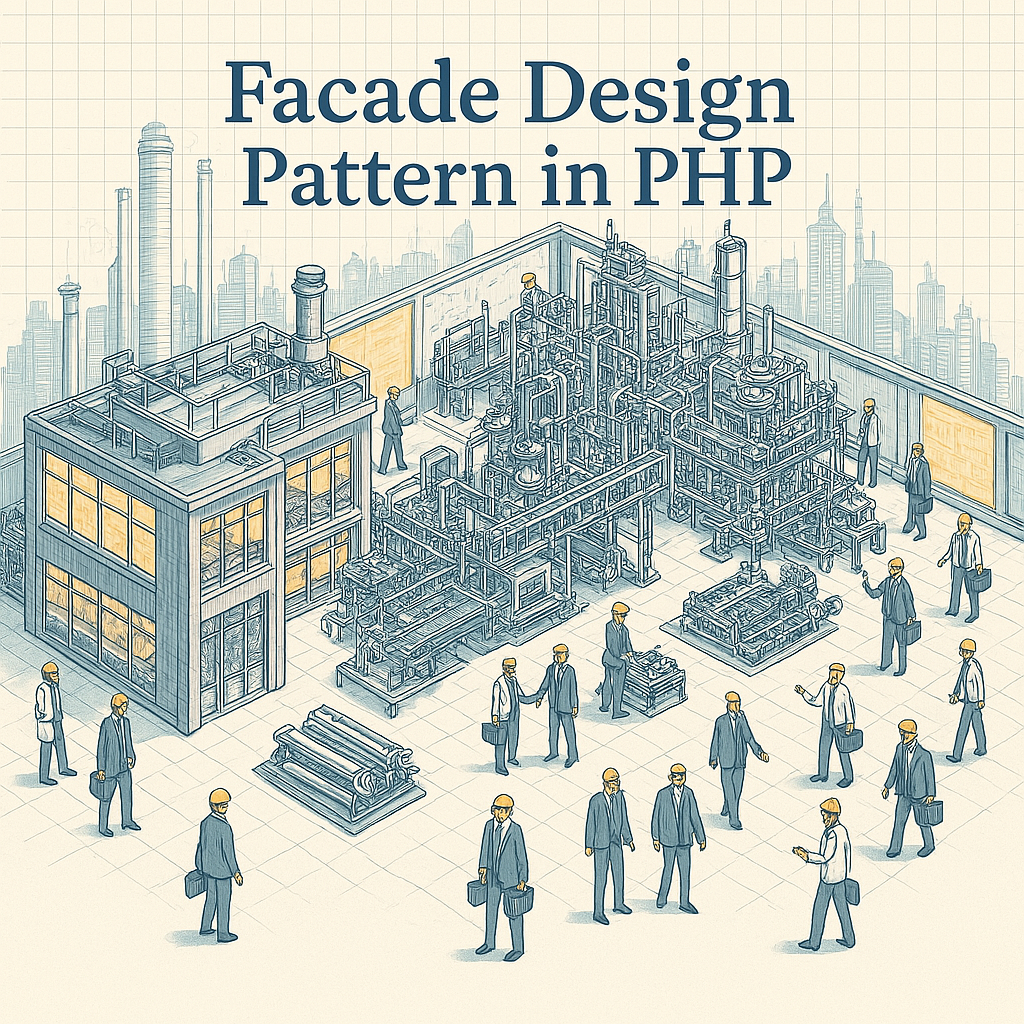In modern PHP applications, systems can quickly grow complex, involving many interdependent classes. This complexity often leads to tight coupling and difficulty in maintenance. That’s where the Facade Design Pattern in PHP becomes a powerful ally.
The facade pattern provides a simplified interface to a larger body of code, such as a complex subsystem. It helps hide the complexities of the system and provides an easy-to-use interface to the client. This pattern belongs to the Structural Design Patterns and is ideal when you need to reduce dependencies and improve code readability.
In this article, we’ll dive into what makes the facade pattern useful, look at a bad code example without it, and then rewrite it the clean way using the facade.
What is the Facade Design Pattern in PHP?
The pattern acts like a gateway that shields clients from complex subsystem logic. Rather than interacting with multiple classes directly, a facade wraps this logic in a single class that provides a simplified API.
Let’s look at an example where the lack of a facade makes code hard to manage and extend.
Bad Code Example Without Facade Design Pattern in PHP
class VideoEncoder {
public function encode(string $video): string {
// Encode video logic
return "Encoded $video";
}
}
class VideoUploader {
public function upload(string $file): string {
// Upload video logic
return "https://example.com/videos/$file";
}
}
class NotificationSender {
public function send(string $url): void {
echo "Notification sent for: $url";
}
}
// Client code (hard to maintain)
$encoder = new VideoEncoder();
$encoded = $encoder->encode("video.mp4");
$uploader = new VideoUploader();
$url = $uploader->upload($encoded);
$notifier = new NotificationSender();
$notifier->send($url);
What’s wrong here?
- The client is managing multiple responsibilities.
- If logic changes, you’ll have to update every client using it.
- There’s tight coupling between components and client code.
Good Code Example Using Facade Design Pattern in PHP
class VideoEncoder {
public function encode(string $video): string {
return "Encoded_$video";
}
}
class VideoUploader {
public function upload(string $file): string {
return "https://example.com/videos/$file";
}
}
class NotificationSender {
public function send(string $url): void {
echo "Notification sent for: $url";
}
}
// Facade
class VideoProcessingFacade {
private $encoder;
private $uploader;
private $notifier;
public function __construct() {
$this->encoder = new VideoEncoder();
$this->uploader = new VideoUploader();
$this->notifier = new NotificationSender();
}
public function process(string $video): void {
$encoded = $this->encoder->encode($video);
$url = $this->uploader->upload($encoded);
$this->notifier->send($url);
}
}
// Client code (simple and clean)
$facade = new VideoProcessingFacade();
$facade->process("video.mp4");
Benefits:
- One clear entry point for clients
- Code is easier to read and test
- Changes to subsystem logic don’t affect client code
When Should You Use the Facade Design Pattern in PHP?
This pattern shines when:
- You’re dealing with legacy code you don’t want to rewrite.
- Multiple classes must be used together frequently.
- You want to isolate dependencies from the business logic.
A great real-world analogy is turning on your TV using a remote. Internally, it powers the screen, sets the input source, and adjusts the volume. But all you did was press one button. That’s the facade in action.
Best Practices for the Facade Design Pattern in PHP
- Don’t force all logic into the facade—keep it a coordinator, not a controller.
- Keep your subsystems loosely coupled so they can evolve independently.
- Use Dependency Injection if you want better testability.
Final Thought
This one of the cleanest ways to simplify complex logic and make your application easier to use and maintain. By offering a unified interface, it makes client code cleaner, and changes in the subsystem less painful.
If you’ve been writing code that touches too many components at once, now is the perfect time to introduce a facade and experience the clarity it brings.
Interested in More Design Patterns?
Discover other powerful patterns like Factory, Strategy, and Observer in this full guide:


